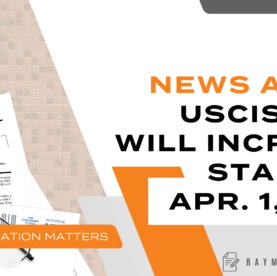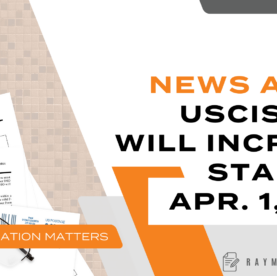H-2B Temporary Non-Agricultural Worker Nonimmigrant Visa Provisions Effective December 16, 2019

On November 15, 2019, the United States Department of Labor (DOL) and the United States Department of Homeland Security (DHS) amended the regulations that govern the H-2B temporary non-agricultural worker certifications. Changes have been made to the DOL’s labor market test that is conducted to assess the availability of the American workers for the required job position.
What changed?
Prior to this new regulation, the employers seeking non-agricultural workers had to advertise the job requirement in a newspaper of general circulation in the area of intended employment. Now, the employers are required to post all their H-2B job opportunities on the website https://seasonaljobs.dol.gov/. The Departments (DOL and DHS) claim that this is the expanded and improvised version of their existing electronic job search. This rule is to be effective starting December 16, 2019.
What is H-2B Nonimmigrant Visa?
The Immigration and Nationality Act (INA), established the H-2B, nonimmigrant visa program, which allows employers in the United States to hire foreign workers, on a temporary basis, to assist the U.S. employer in meeting a need for employees during peak load, a worker, seasonal, or annual intermittent periods of increased workload.
Employers in all industries across Pennsylvania and New Jersey participate in the H-2B nonimmigrant visa program each year, including, but not limited to, manufacturers, landscapers, educational institutions, contractors, wholesalers, distributors, resorts, and hotels.
To qualify for the H-2B nonimmigrant visa program, an employer must establish that:
- There are insufficient U.S. workers who are ready, willing, able, and available to do the temporary work
- Hiring H-2B workers will not adversely affect the wages and market for existing, similarly situated U.S. employers
- The need for the worker is not permanent, rather, that it is because of either a one-time, peak load, seasonal, or intermittent need. Evidence of the temporary need must be provided to the Department of Labor as part of the H-2B process
The U.S. employer must first seek a prevailing wage from DOL for the employment offered. The employer then submits the offered employment for certification by DOL, which requires the posting of the offered employment with the respective state workforce agency, a short recruitment process, and submission and review of the recruitment results by DOL. Once DOL certifies the offered employment, the employer then files a petition with the United States Citizenship & Immigration Services (USCIS) for consideration.
There is a numerical limit on the number of H-2Bs that is issued in a fiscal year. This is called the “cap.” For the H-2B nonimmigrant visa program, the numerical cap is set at 66,000 visas per fiscal year. Out of which 33,000 workers begin employment in the first half of the fiscal year and the remaining 33,000 workers in the second half.
If selected, USCIS approves typically the petition for an initial employment period for the short duration certified by DOL. The H-2B visa, however, can be extended in increments of up to one year each, with a maximum period of stay up to 3 years. Any person who has held the H-2B status for a period of three years must leave the country for a minimum of three months to be readmitted in H-2B nonimmigrant. Spouses and unmarried children under 21 years of age may seek admission under H-4 nonimmigrant visas. Family members are not eligible for employment in the United States.
To learn more about this post or any other immigration matter, please feel free to contact me at rglahoud@norris-law.com.





